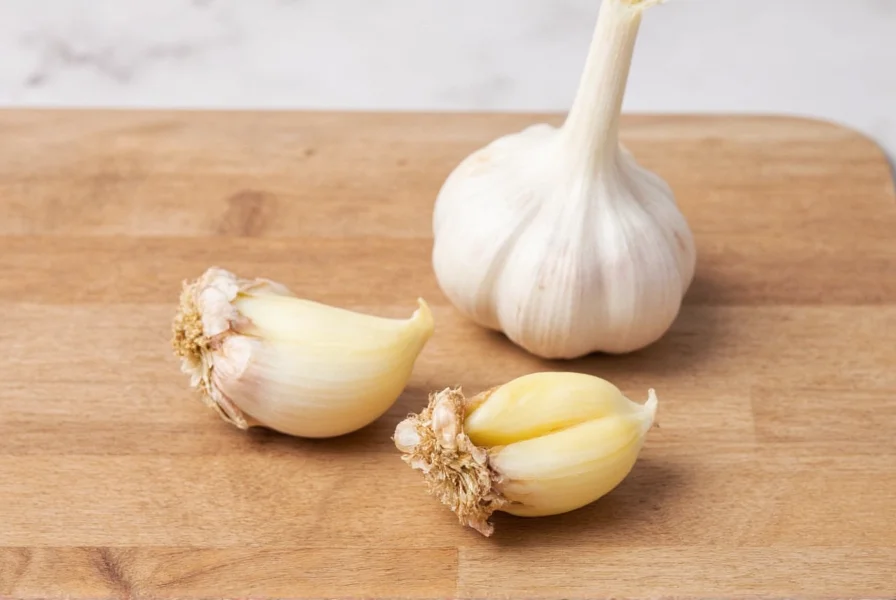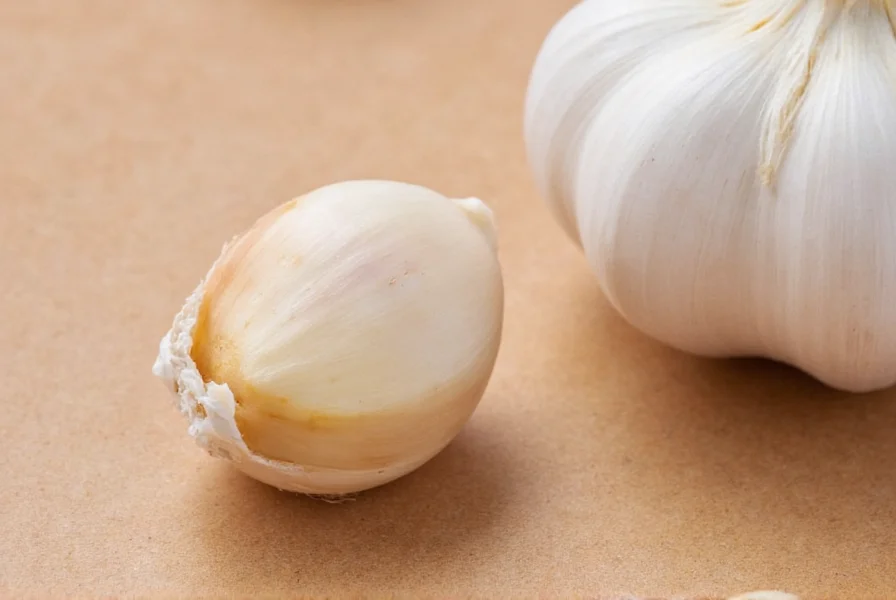Understanding garlic measurements is essential for achieving perfect flavor balance in your cooking. Many recipes specify garlic in teaspoons rather than cloves, creating confusion for home chefs trying to follow instructions precisely. This guide provides accurate conversions and practical tips to ensure your dishes turn out exactly as intended.
Why Garlic Measurements Vary
Garlic cloves aren't uniform in size, which directly impacts their volume when prepared. Commercial garlic varieties differ significantly, and even within the same bulb, cloves can range from petite to jumbo. The preparation method also affects volume:
- Minced garlic packs more densely than chopped
- Pressed garlic yields slightly less volume than hand-minced
- Roasted garlic reduces in volume significantly
| Garlic Size | Minced Garlic | Chopped Garlic | Garlic Powder |
|---|---|---|---|
| Small clove (0.5" diameter) | 1⁄4 tsp | 3⁄4 tsp | 1⁄8 tsp |
| Medium clove (0.75" diameter) | 1⁄2 tsp | 3⁄4 tsp | 1⁄4 tsp |
| Large clove (1"+ diameter) | 1 tsp | 1 1⁄4 tsp | 1⁄2 tsp |
Practical Measurement Tips for Cooking
When converting cloves to teaspoons in your recipes, consider these professional kitchen techniques. Knowing how many teaspoons in a clove of garlic helps maintain recipe integrity, especially in dishes where garlic plays a starring role.
For the most accurate measurement of how much minced garlic equals one clove, use the spoon test: After mincing your garlic, lightly pack it into a measuring spoon without pressing down. This technique prevents overpacking, which would increase the garlic concentration in your dish.

When Precision Matters Most
Certain recipes demand exact garlic measurements. In delicate sauces, dressings, and baked goods, understanding garlic clove to teaspoon conversion prevents overpowering other flavors. For most savory dishes, however, the exact how many teaspoons is one garlic clove measurement can be adjusted to personal taste.
Remember that fresh garlic intensity varies by season and variety. Spring garlic tends to be milder than cured garlic, meaning you might need slightly more volume to achieve the same flavor impact. This natural variation explains why some cooks prefer measuring garlic by taste rather than volume.
Common Substitutions and Equivalents
Running out of fresh garlic? Here's how to substitute properly while maintaining your recipe's flavor profile. When converting how much minced garlic from a jar equals fresh, remember that preserved garlic often contains citric acid which slightly alters the flavor.
- 1 clove fresh garlic = 1⁄2 teaspoon jarred minced garlic
- 1 clove fresh garlic = 1⁄8 teaspoon garlic powder
- 1 clove fresh garlic = 1⁄2 teaspoon garlic paste
- 3 cloves fresh garlic = 1 teaspoon garlic salt (reduce additional salt)

Professional Chef Recommendations
Top chefs emphasize that while precise garlic clove measurements help maintain consistency, developing your palate is equally important. "I always start with the standard garlic to teaspoon conversion, then adjust based on the specific garlic's pungency," shares Chef Maria Rodriguez of The Culinary Institute. "The best cooks taste as they go."
For beginners learning how to measure garlic for recipes, practice mincing different sized cloves and measuring the results. This hands-on experience builds intuition that eventually surpasses rigid measurements. Over time, you'll recognize when a recipe's "1 clove" actually requires more or less based on your garlic's potency.
Frequently Asked Questions
How many teaspoons of minced garlic equals one large clove?
One large garlic clove (approximately 1 inch in diameter) yields about 1 teaspoon of minced garlic. This measurement assumes standard mincing technique without excessive packing of the garlic into the measuring spoon.
Can I substitute garlic powder for fresh garlic in equal measurements?
No, garlic powder is significantly more concentrated. Use 1⁄8 teaspoon of garlic powder to replace one medium garlic clove (1⁄2 teaspoon fresh minced). Remember to adjust liquid content slightly when making this substitution as powder absorbs moisture.
Why does my minced garlic measurement differ from recipe recommendations?
Garlic size varies dramatically by variety and season. Commercial recipes typically base measurements on medium cloves (about 0.75 inches in diameter). If your garlic heads contain mostly small or large cloves, your teaspoon measurements will differ from standard conversions.
How should I measure roasted garlic cloves?
Roasted garlic yields about 30% less volume than raw garlic due to moisture loss. One medium roasted clove equals approximately 1⁄3 teaspoon. For best results, measure roasted garlic after it has cooled slightly but before it becomes too firm.










 浙公网安备
33010002000092号
浙公网安备
33010002000092号 浙B2-20120091-4
浙B2-20120091-4